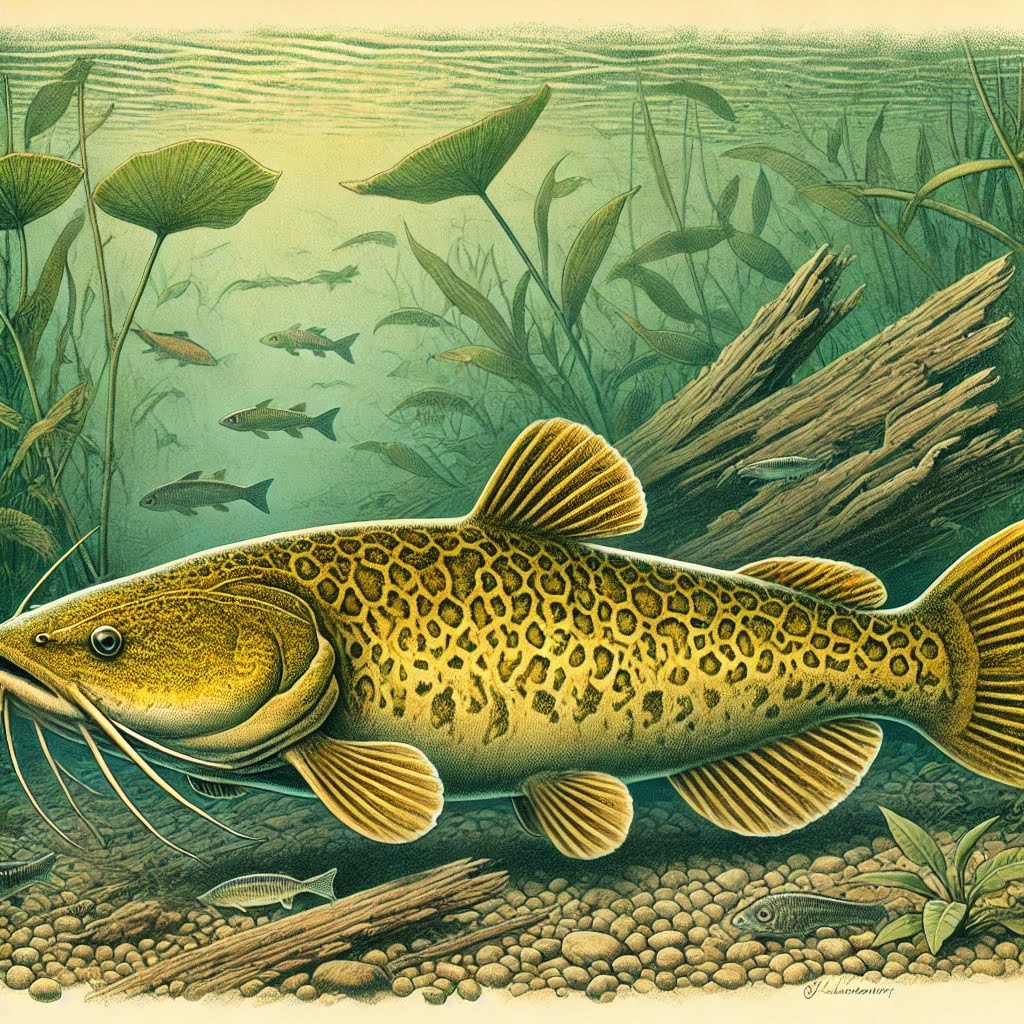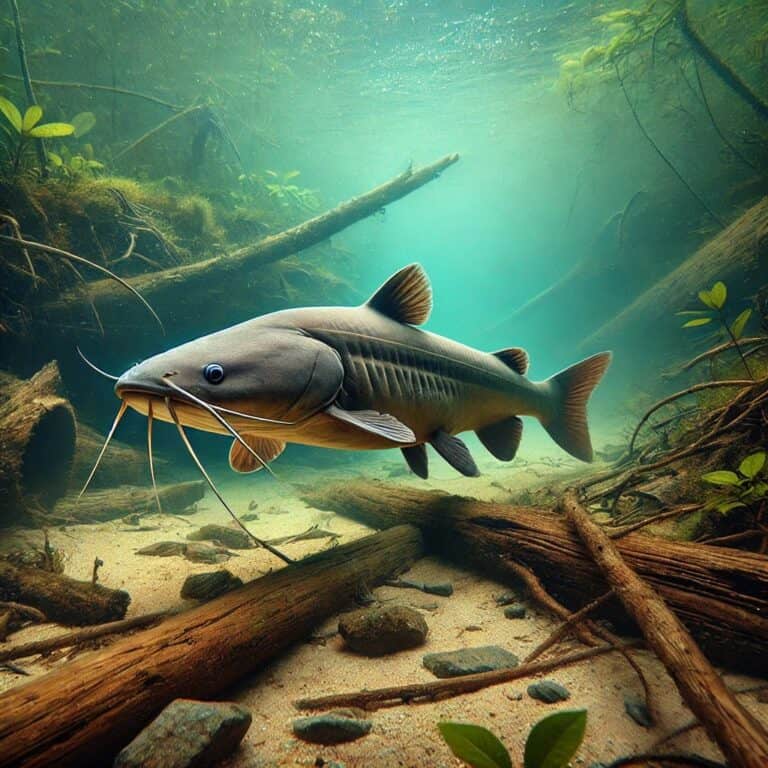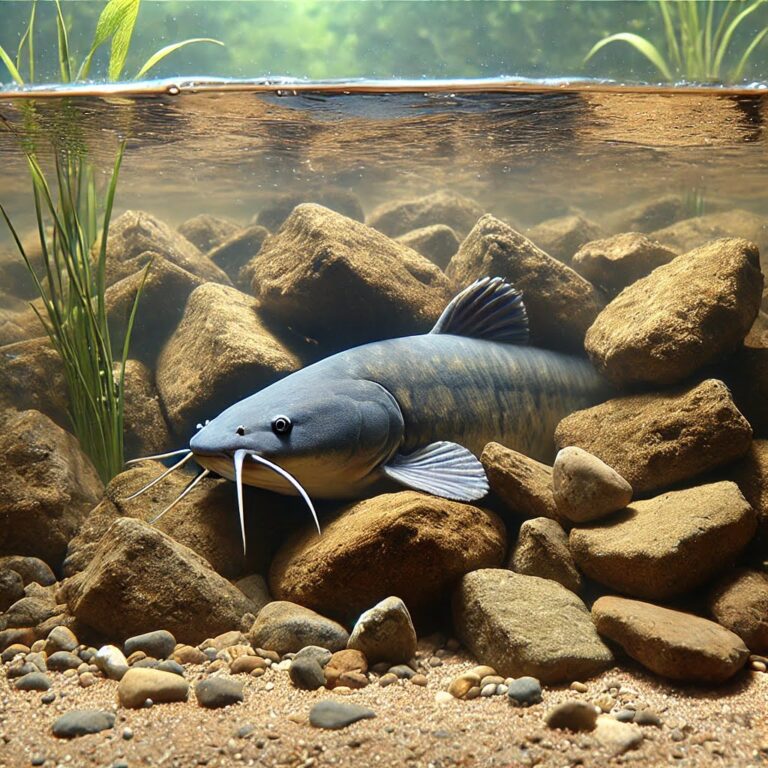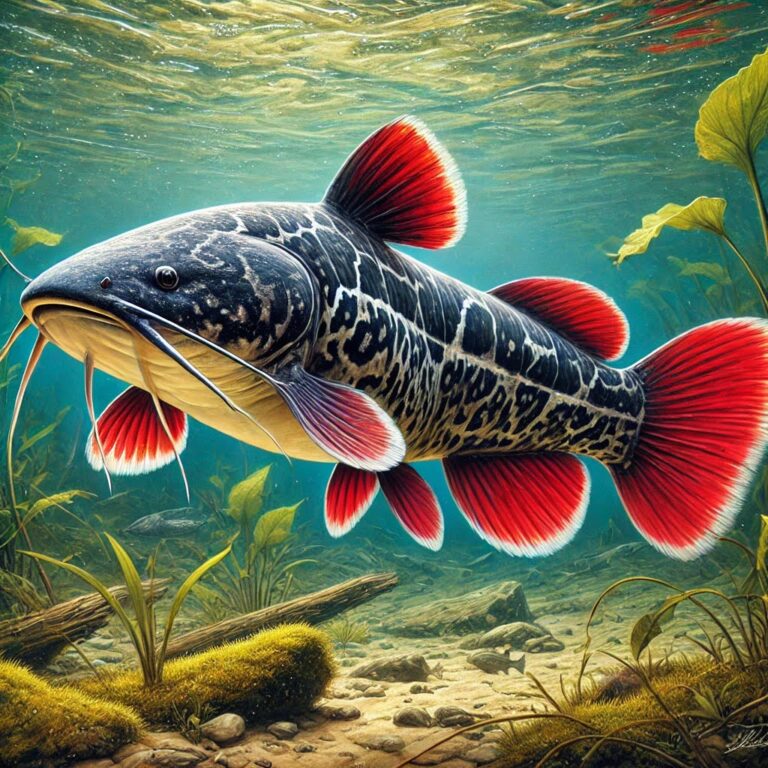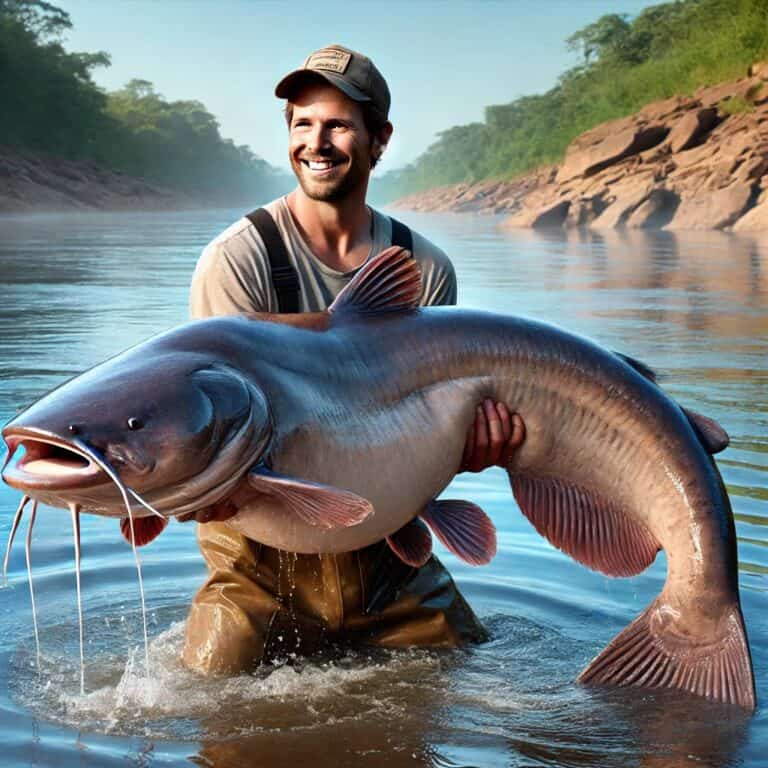Flathead Catfish – 5 Vital Tips for Anglers
Revered for both its size and culinary qualities, the flathead catfish is a prime target for anglers across the United States.
The flathead catfish (Pylodictis olivaris), also known by names such as “yellow cat” or “mudcat,” is a remarkable species native to North America.
This comprehensive guide to catching flathead catfish will cover its characteristics, habitats, fishing techniques, and culinary value (who’s hungry?).
What is a Flathead Catfish?
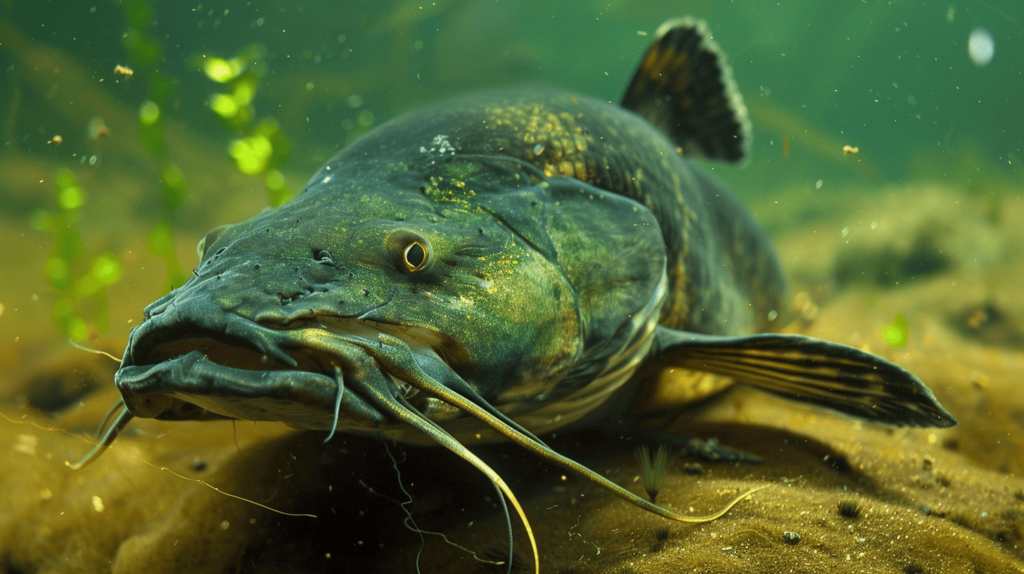
Physical Characteristics
Flathead catfish are distinguished by several unique features:
- Size: Among the largest catfish species in North America, flatheads can grow to impressive sizes. Adult flatheads commonly reach weights of 20-40 pounds, with some specimens exceeding 100 pounds. Lengths can surpass four feet, making them a formidable catch.
- Color: Their coloration ranges from mottled yellow-brown to olive, providing excellent camouflage in their natural habitats. The ventral side, or belly, is typically lighter, often white or pale yellow.
- Shape: They possess a notably flat, broad head with a wide mouth and a prominent lower jaw. This distinctive head shape aids in ambushing prey.
- Fins: They have a forked tail and a dorsal fin positioned mid-back, characteristic of many catfish species.
Habitat and Distribution
This species is native to the central and southeastern United States.
Their range includes the Mississippi, Missouri, and Ohio River systems, though they have been introduced to other regions.
Preferred habitats include:
- Rivers and Streams: Flathead catfish thrive in slow-moving rivers and streams with deep holes, submerged logs, and other underwater structures providing cover.
- Lakes and Reservoirs: They are also found in large lakes and reservoirs, particularly in areas with ample cover and structure.
- Nesting Sites: During the spawning season, flathead catfish seek out secluded areas with suitable cover for nesting, such as hollow logs or undercut banks.
How to Catch Flathead Catfish
Fishing for flathead catfish can be both challenging and rewarding. Understanding their behavior and preferred habitats is crucial for a successful catch.
Equipment and Gear
- Rods and Reels: Due to the size and strength of flathead catfish, robust gear is essential. Heavy-duty rods and reels capable of handling large, powerful fish are recommended.
- Line and Hooks: Strong braided or monofilament line with a high pound test (50 pounds or more) is advisable. Use large, durable hooks suitable for live bait fishing.
Bait Selection
Flathead catfish are predatory and prefer live bait. Effective bait options include:
- Live Fish: Small fish such as bluegill, sunfish, or shad are excellent choices. The movement of live bait attracts the predatory instincts of flathead catfish.
- Crayfish: Live crayfish can also be effective, especially in rivers and streams where they are a natural part of the catfish’s diet.
Fishing Techniques
- Bottom Fishing: They are bottom dwellers, so presenting bait on or near the bottom is crucial. Use a sturdy rod holder to keep your rod secure, as flatheads can put up a strong fight.
- Night Fishing: They are also nocturnal feeders, making night fishing particularly effective. Set up in likely spots and use live bait to attract them after dark.
- Structure Fishing: Target areas with submerged logs, rocks, or other structures where they are likely to be hiding. Cast your bait close to these structures and be prepared for a strong bite.
Why Flathead Catfish Are Sought After
Flathead catfish are highly prized for several reasons, ranging from their size and sporting challenge to their culinary appeal.
The Sporting Challenge
- Size and Strength: Their size and strength make them a thrilling catch. Their powerful runs and fights require skill and patience, providing an exhilarating experience for anglers.
- Trophy Potential: Due to their large size, flathead catfish offer trophy potential. Landing a massive flathead can be a memorable achievement and a highlight of any angler’s career.
Culinary Value
Flathead catfish are renowned for their excellent table fare. Their flavor and texture make them a favorite among fish enthusiasts.
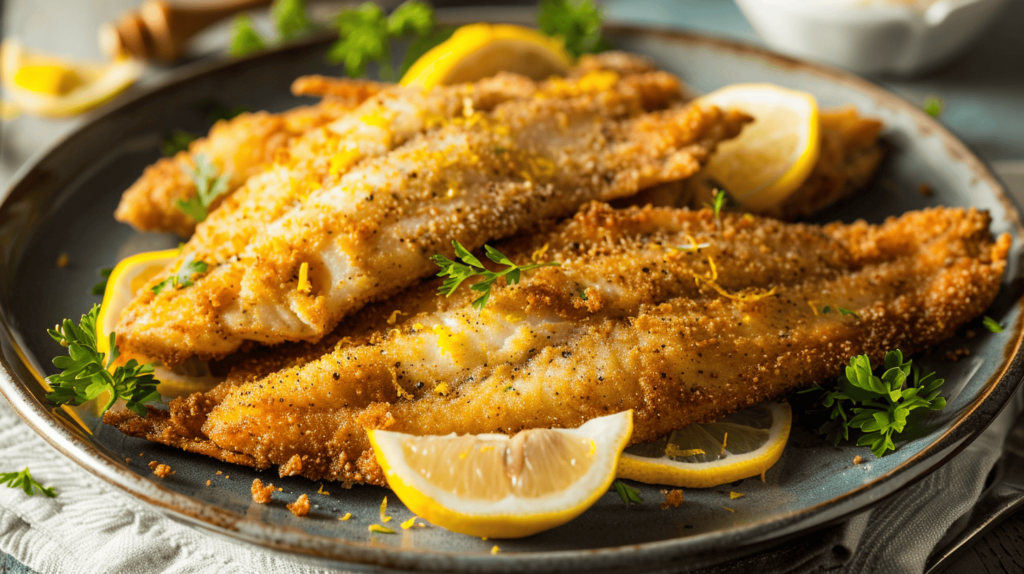
- Taste and Texture: They have a sweet, buttery flavor with a fine, flaky texture. Their meat is less fatty than that of other catfish species, offering a delicate and enjoyable taste experience.
- Versatility in Cooking: The firm flesh of flathead catfish holds up well to various cooking methods. They can be fried, baked, grilled, or smoked, each method enhancing their natural flavors.
- Nutritional Benefits: Like other fish, these are a good source of protein and essential nutrients. They are low in fat and provide omega-3 fatty acids, contributing to a healthy diet.
Where to Find Flathead Catfish
Knowing where to find them can significantly increase your chances of success. Here are some prime locations and tips for finding these fish:
River Systems
- Mississippi River Basin: The Mississippi River and its tributaries are prime habitats for flathead catfish. Deep holes, undercut banks, and areas with ample cover are ideal spots.
- Missouri and Ohio Rivers: These rivers also support healthy populations. Look for similar habitats with deep water and structure.
Lakes and Reservoirs
- Large Lakes: Flathead catfish are found in large lakes across their range. Focus on areas with submerged structures and deep water.
- Reservoirs: Many reservoirs provide excellent habitats for flathead catfish. Fishing near dam structures, submerged logs, and rocky areas can yield good results.
Seasonal Considerations
- Spring and Early Summer: Flathead catfish spawn in late spring to early summer when water temperatures rise. During this time, they seek out secluded nesting sites, making them easier to locate.
- Fall and Winter: In cooler months, flathead catfish tend to move to deeper water. Targeting deep holes and slow-moving areas can be effective.

Best Practices for Catching Flathead Catfish
Successful flathead catfish fishing requires a combination of knowledge, skill, and patience. Here are some best practices to enhance your fishing experience:
Patience and Persistence
- Time Investment: It can require long hours and persistence. Be prepared to spend significant time on the water, especially when targeting larger fish.
- Night Fishing: Given their nocturnal feeding habits, night fishing can be particularly productive. Plan your trips accordingly and bring appropriate lighting and safety gear.
Proper Handling and Conservation
- Handling: When handling use wet hands or a wet towel to protect their slime coat. This helps prevent injury and increases their chances of survival if released.
- Conservation: Practice catch and release for larger fish to help maintain healthy populations. Consider keeping smaller fish for the table and releasing trophy-sized individuals.
Weather and Water Conditions
- Weather Patterns: Pay attention to weather patterns, as changes can affect catfish behavior. Overcast days and periods after rain can be particularly productive.
- Water Conditions: Water temperature, clarity, and flow rate can all impact catfish activity. Adjust your fishing techniques based on these conditions for better results.
Conclusion
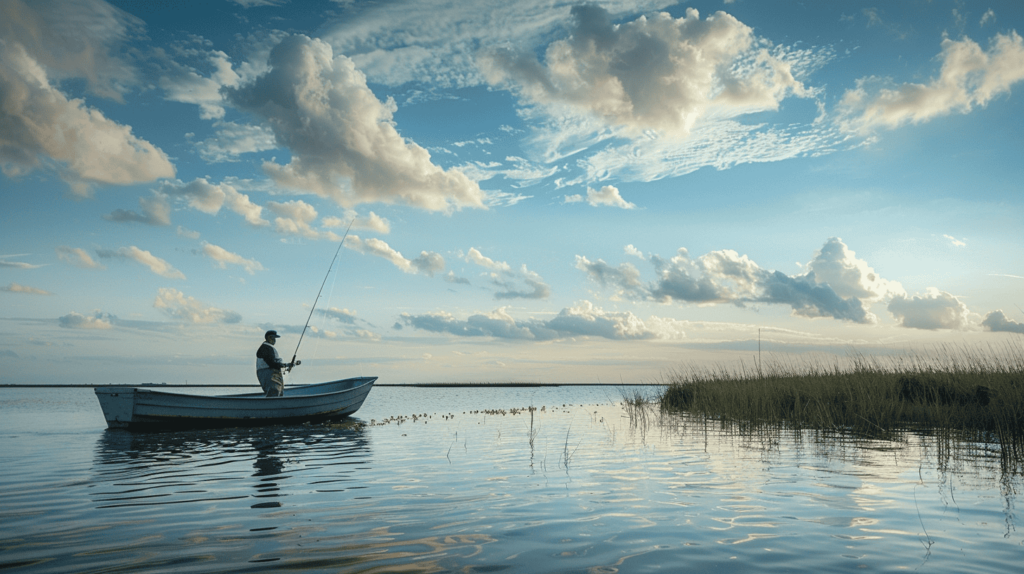
These fish are a remarkable species that offers both a thrilling angling challenge and exceptional culinary value.
Understanding their characteristics, habitats, and behavior is essential for successful fishing.
Their size, strength, and delicious flavor make them a sought-after catch in the fishing community.
Check your watch because it’s probably 5:00 PM (somewhere?) and that means it’s time to head to your nearest river, lake, or reservoir and cast those lines.
Happy fishing!

